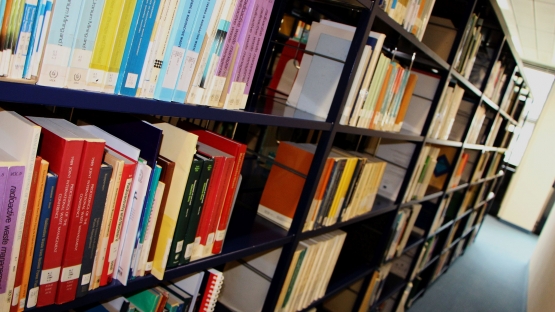When it comes to ensuring that nuclear technology is used safely and appropriately, capacity building is critical. Without a steady supply of qualified personnel, armed with a fresh education and suitably trained, ready to assume their roles as engineers and scientists, the sustainability of a nuclear power programme cannot be assured.
At its core, capacity building is about providing that assurance. By synthesizing education, training, human resource development and knowledge management, capacity building programmes can guarantee that the expertise for nuclear power will exist well into the future.
As access to nuclear technology grows, it's equally important that access to nuclear education grows too. But for some IAEA Member States, which lack robust higher education programmes in certain specialised fields, providing that access can be difficult. It's for this reason that the IAEA technical cooperation (TC) programme continues to support national and regional projects which promote human resource development.
A regional TC project, inaugurated in January 2014, is bringing together 24 African Member States who share the challenge of educating an adequate number of personnel for their nuclear sectors. In collaboration with the African Education Network in Nuclear Science and Technology (AFRA-NEST), this TC project is using a new e-learning platform to facilitate networking and knowledge-sharing across long distances. By using the same education materials, the participating Members States will simplify the process of exchanging students, recognizing degrees and cooperating regionally.
While developing new nuclear expertise is the objective of many technical cooperation projects, it is also important to focus on preventing the loss of existing expertise. As a high-tech sector, the nuclear industry relies heavily on the knowledge and professional experience of its members. Current retirement trends, however, have forced stakeholders to improve their nuclear knowledge management through a broad system of identification, dissemination and preservation.
Romania's first nuclear power plant came online in 1996 and has been a reliable source of power ever since. However, a need for experts in nuclear fuel management is expected within five to 10 years, as the plant's original employees begin to retire. At the request of the Romanian government, a TC project is helping to address this capacity gap by supporting the establishment of a new Information and Communication Technology (ICT) system. This system will preserve and transfer tacit knowledge from established experts to newcomers entering the industry for the first time.
In a similar TC project, the IAEA has supported the efforts of the Ukrainian government to develop a comprehensive nuclear knowledge management system. By providing the necessary digital platform and corresponding base of knowledge to the personnel of nuclear power plants (NPP) that are under construction or being commissioned, this TC project can ensure that the necessary expertise is available from the get-go.
All nuclear power facilities must ensure that sufficient competent human resources are available throughout their lifecycles. This prerequisite is elaborated in the Convention on Nuclear Safety, underscoring the importance of capacity building.
But the focus on capacity building as a condition for the safe and responsible use of nuclear power is relatively new. In order to promote the role of capacity building, the IAEA organized the International Conference on Human Resource Development for Nuclear Power Programmes: Building and Sustaining Capacity, held at the Agency's headquarters in Vienna from 12 to 16 May 2014. The meeting addressed both current and future challenges to capacity building to "continuously ensure sufficient and competent human resources necessary to assume their responsibility for safe, responsible and sustainable use of nuclear technologies" as elaborated in the IAEA Action Plan on Nuclear Safety.


